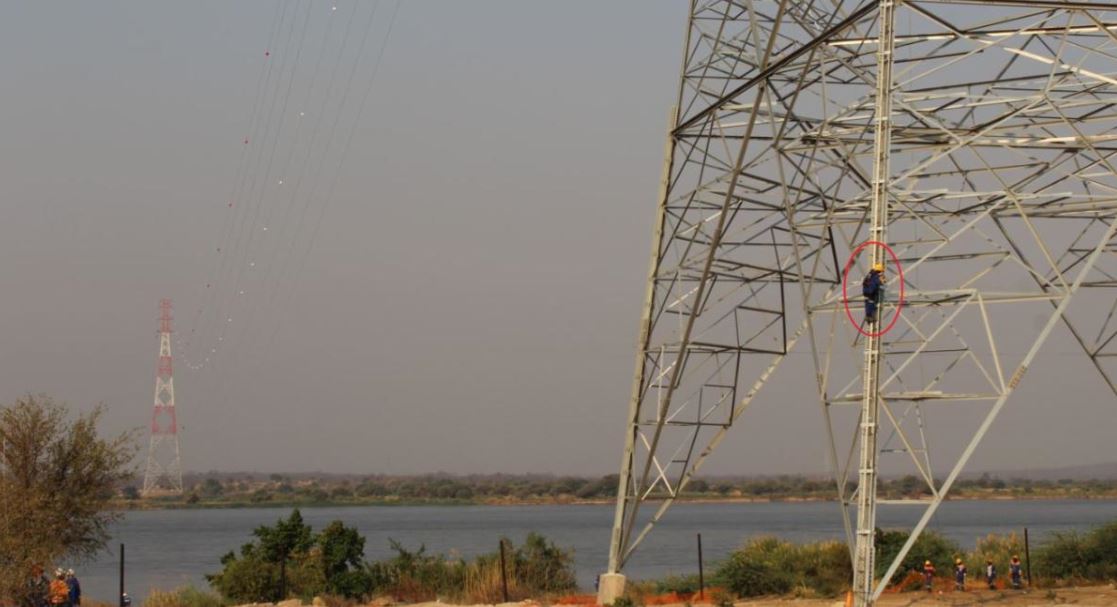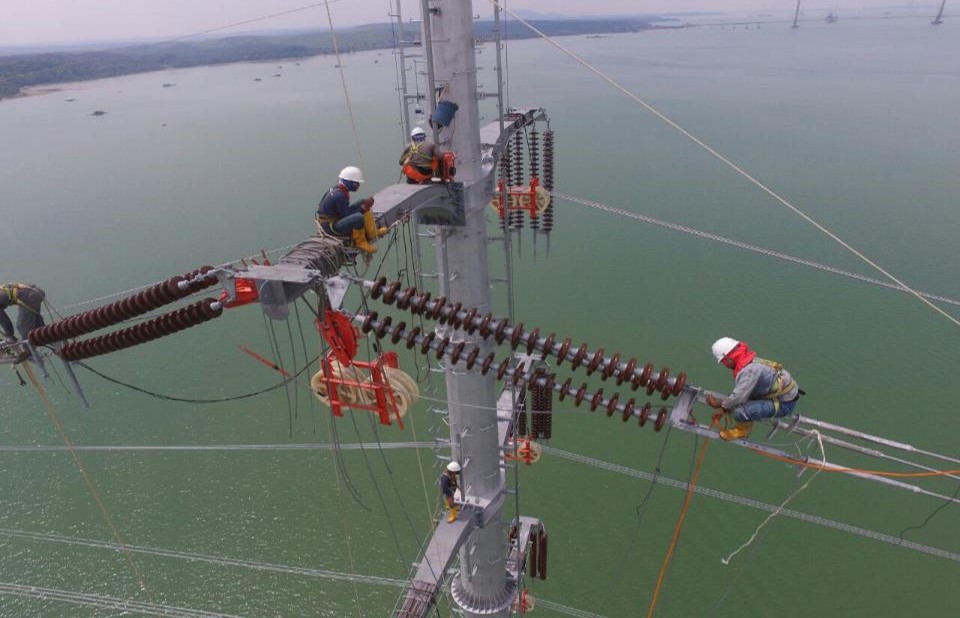Overview:
In spite of the fact that High Capacity ACCC® Conductor is approximately twice the price of conventional AAAC or ACSR conductor, ACCC conductor reduces up-front capital costs and overall project costs on new transmission lines and reconductor projects. This article briefly discusses how upfront capital cost reductions are achieved, as well as how the ACCC conductor’s higher capacity and greater efficiency continues to reduce utility costs throughout its entire service life.
Conductor Description:
ACCC conductor utilizes a hybrid carbon and glass fiber core that is approximately twice as strong as conventional steel core strands and less than half the weight. This allows the ACCC conductor to incorporate nearly 30 percent more aluminum in any given conductor diameter (using compact trapezoidal shaped strands) – without any weight penalty. The hybrid carbon and glass fiber core exhibits a coefficient of thermal expansion that is nearly ten times less than a conventional steel core, which allows CTC Global’s ACCC conductor to carry approximately twice the current without excessive thermal sag that can otherwise cause clearance violations.
The added aluminum content supports the increase in current capacity and also allows the conductor to operate more efficiently under any load condition compared to any other type of conductor of the same diameter and weight. Improved efficiency equates to reduced line losses, reduced generation requirements, reduced fuel consumption, and reduced emissions associated with reduced fuel consumption. The non-corrosive and vibration resistant composite core and high grade aluminum strands offer excellent reliability and longevity even in harsh environmental conditions.
Reconductor Project Savings:
As demand for affordable and reliable electricity continues to grow, many older lines are being upgraded to carry additional current. Various conductors have been designed specifically for this task, as they are capable of operating at higher temperatures. Unfortunately, higher temperatures equate to exponentially greater line losses and increased thermal sag. As many existing structures also support “under built” wires that include lower voltage electrical lines, telephone lines, and various other communication cables, it is often impractical to install larger / heavier conductors or less efficient / high temperature conductors that may be capable of carrying increased current, but that exhibit increased sag due to their increased weight or high coefficients of thermal expansion.
Prior to the introduction of ACCC conductor, utilities interested in increasing the capacity of an existing circuit typically had to modify or replace existing structures in order to accommodate larger / heavier conventional conductors or less efficient / high temperature conductors that exhibited increased sag. This process was found to be very costly, difficult, and time consuming – especially when special permitting was required. In some cases, when existing lines could not be shut down for extended periods of time to accommodate structural upgrades or structural replacement, completely new lines had to be installed as an alternative, but at even higher costs. In many cases, load demand increases often occur in heavily populated areas where the addition of new transmission or distribution corridors is next to impossible. The use of ACCC conductor now makes the whole process much easier, faster, and less expensive. This is why over 430 installations have already been completed with ACCC conductor since it first became commercially available in 2005.
New Transmission Line Savings:
In many parts of the world, increased demand for electricity and an interest in developing renewable resources, require that new transmission lines are built to carry power to load centers from remote locations. Though the ACCC conductor was initially developed as a high-capacity / low-sag conductor capable of operating at very high temperatures (as necessary), many utilities are now utilizing the ACCC conductor at much cooler operating temperatures associated with higher voltages ranging from 345 to 1000 kV.
The economic decision to use ACCC on new lines is based on the ACCC conductor’s ability to reduce upfront capital costs, simplify permitting, and offer performance and savings advantages over its entire service life.
The ACCC conductor’s greater strength, dimensional stability and excellent self-damping characteristics allow it to be installed at higher tensions between fewer and / or shorter structures. Fewer and / or shorter structures help save money, streamline the permitting process, reduce visual impact, reduce environmental impact, and reduce engineering and installation timelines, all of which contribute to reduced overall project costs. Add to this, improved longevity, greater capacity, and improved efficiency and you will quickly see that there really is only one choice when it comes to selecting a conductor type.






